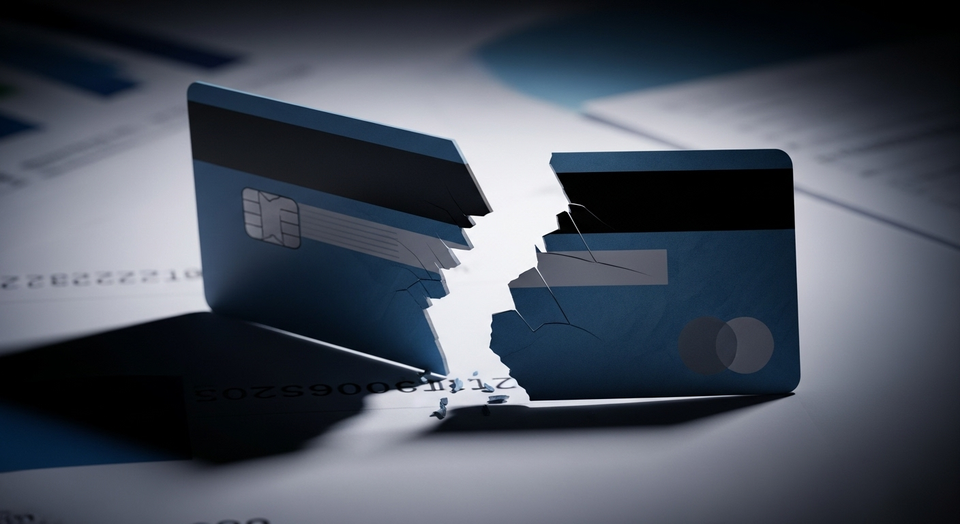DRTSCLCC Credit Card Lending Tightening Indicator: When Banks Don't Want to Lend to You

Ever wondered how banks predict an economic downturn before it hits the headlines? There's a powerful, yet often overlooked, indicator that acts as the banking sector's early warning system: the DRTSCLCC. Understanding this metric can offer crucial insights into the health of the economy and help ordinary people make smarter financial decisions.
中文版
What is DRTSCLCC?
Imagine you're applying for a credit card at a bank, and the bank has to decide whether to approve it. The DRTSCLCC indicator tells us: what percentage of banks are "tightening their purse strings" and becoming more cautious with credit card approvals.
DRTSCLCC stands for "Net Percentage of Domestic Banks Tightening Standards for Credit Card Loans."
In simple terms:
- Positive value (e.g.,
20%):20%of banks are tightening credit card approvals, becoming pickier. - Negative value (e.g.,
-10%):10%of banks are loosening standards, more willing to issue credit cards. - Higher values: Banks are more cautious, the economy might be at risk.
- Lower or negative values: Banks are more relaxed, willing to take more risks.
Why Is This Indicator Important?
This indicator is like a "thermometer" for the economy. When banks suddenly become unwilling to lend to ordinary people, it often means:
- Banks smell danger: They worry about not getting their money back.
- Economic troubles ahead: Unemployment might rise, and people might struggle to pay credit cards.
- Financial crisis looming: Historically, this indicator spikes significantly before every major crisis.
Historical "Alarm Bells"
1. The 2008 Financial Crisis (Subprime Crisis)
In July 2008, this indicator shot up to 66.7%! This meant two-thirds of banks were tightening credit card approvals. Sure enough, months later Lehman Brothers collapsed, and the global financial crisis erupted. During that time:
- Many people lost jobs and couldn't pay credit cards.
- Banks suffered heavy losses, afraid to lend again.
- The entire economy fell into recession.
2. The 2020 COVID-19 Pandemic
In July 2020, this indicator hit a historic high: 71.7%! Over 70% of banks were tightening standards. This was because:
- The pandemic caused massive unemployment.
- Many stores closed, people's income plummeted.
- Banks feared widespread defaults.
3. The Recovery Period "Money Printing"
Interestingly, in 2021 this indicator fell to -37.3% (a historic low), meaning banks started "throwing money around" again. This was because:
- Governments printed lots of money to stimulate the economy.
- Interest rates dropped to near zero.
- Banks needed to lend to make money.
What's the Current Situation?
As of July 2025, this indicator stands at 10.4%, representing a moderate tightening state. This indicates:
- Banks are slightly worried, but not panicking.
- Some economic uncertainty exists.
- Not at crisis level yet, but worth watching.
 |  |  |  |
How to Interpret This Indicator?
Here's how ordinary people should view it:
- 0-20% (Mild tightening): Normal range, banks are slightly cautious.
- 20-40% (Significant tightening): Pay attention, a storm might be brewing.
- Above 40% (Severe tightening): Danger signal! Historically, this only occurs during major crises.
- Negative values (Loosening standards): Banks are actively lending, the economy might be overheating or recovering.
Lessons for Ordinary People
- When the indicator rises rapidly:
- Control credit card spending.
- Increase emergency savings.
- Avoid excessive debt.
- When the indicator is high:
- It will be harder to get credit card approval.
- Existing credit limits might be reduced.
- Prepare for a possible recession.
- When the indicator is negative:
- It's easy to get credit cards, but be rational.
- Beware of overspending traps.
- Remember: just because you can borrow doesn't mean you should.
Summary
DRTSCLCC is like the banking sector's "fear index." When banks are afraid to lend you money, it usually means an economic storm is approaching. History tells us that when this number exceeds 40%, it's time to fasten your seatbelt.
The current 10.4% level isn't high, but it has risen from 5.6% at the beginning of 2025, showing banks are becoming more cautious. As ordinary people, we should: maintain rational spending, control debt levels, and build emergency funds.
Remember: Banks smell economic changes earlier than we do. When they start tightening their purse strings, we should also be more vigilant.
Data Source: Federal Reserve Economic Data (FRED) - DRTSCLCC Indicator
Data updated through July 2025

